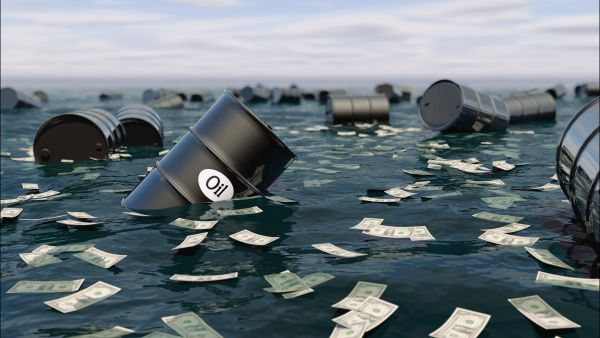This has been a historic week for the energy sector by all means. No one has ever witnessed a free fall in oil prices the way we did on the 20th of April. But many are still wondering: What happened?
BREAKING: Crude oil prices on the May contract plummet below negative $10 per barrel; crude oil is down more than 160% percent on the day https://t.co/HlsH3slbGO pic.twitter.com/c4jS8s856K
— CNBC Now (@CNBCnow) April 20, 2020
It is no secret that the world is bracing for a potentially severe economic crisis that might affect all sectors, mainly as a result of the coronavirus lockdown that has affected every country on earth.
Most businesses are halting activity nowadays and manufacturing processes have been limited to absolutely necessary products such as medical supplies and food. Additionally, with most people banned from leaving their homes, millions worldwide are ditching daily transportation and canceling travel plans, leaving the oil industry in a dire situation.
In a free-market world, the only factor that dominates prices is supply and demand. It can either make prices skyrocket or make it absolutely cheap. Hence, the major decrease in demand for oil over the last few months has caused its prices to take an unprecedented dive, while storage units are reportedly overflooding with barrels that no one needs.
Yet, this is not the only reason for the shocking negative figure we've seen in West Texas Intermediate crude futures last Monday.
Prices.
— The Spectator Index (@spectatorindex) April 20, 2020
WTI crude oil: -$54
Brent crude: $26
You may want to know that crude oil falls into three different categories; WTI, Brent, and Dubai. These benchmark oils differ in terms of density, quality, usage, and cost. WTI crude which has been particularly crashing is the main US oil and it's mostly produced in Texas.
If you're familiar with the stock market's tradings, you can easily understand that the oil market has a number of financial investors whose activities don't include buying the physical barrel of oil, rather they buy and sell oil contracts in order to make profits.
Since the oil market allows investors to buy and sell "paper crude barrels" for a month before they actually have to pick it up and store it in a physical space, tradings are usually referred to as "Crude Oil Futures."
On April 20th, the WTI May futures were about to expire, so investors with paper barrels were doing, literally, everything they can to sell them before they turn into physical ones. Trying to avoid the added cost of delivery and storage, investors were offering barrels for free and some were willing to offer up to $40 to potential buyers if they help them get rid of the unwanted physical barrels, pushing WTI futures towards negative territory.
President Trump said today he has ordered his administration to rescue U.S. oil companies that have been battered by record low oil prices due to the pandemic https://t.co/qe6xQBlEjV
— POLITICO (@politico) April 21, 2020
Pressured by this sudden crash, the WTI June futures have also started to plummet amid fears of major American oil companies going bankrupt and laying off thousands of employees.
For the last two days, the Brent Crude has also started to feel the shock; falling into a 21-years law swinging around $30 per barrel.
While it's not easy to predict how long this crisis will last, as we continue to battle the coronavirus, it's important to note that oil producers and exporters around the world might have to take even more drastic measures to stabilize prices; such as cutting daily production rates even lower than what they have agreed to in OPEC+ latest deal e\planned to go into effect 1st of May.







